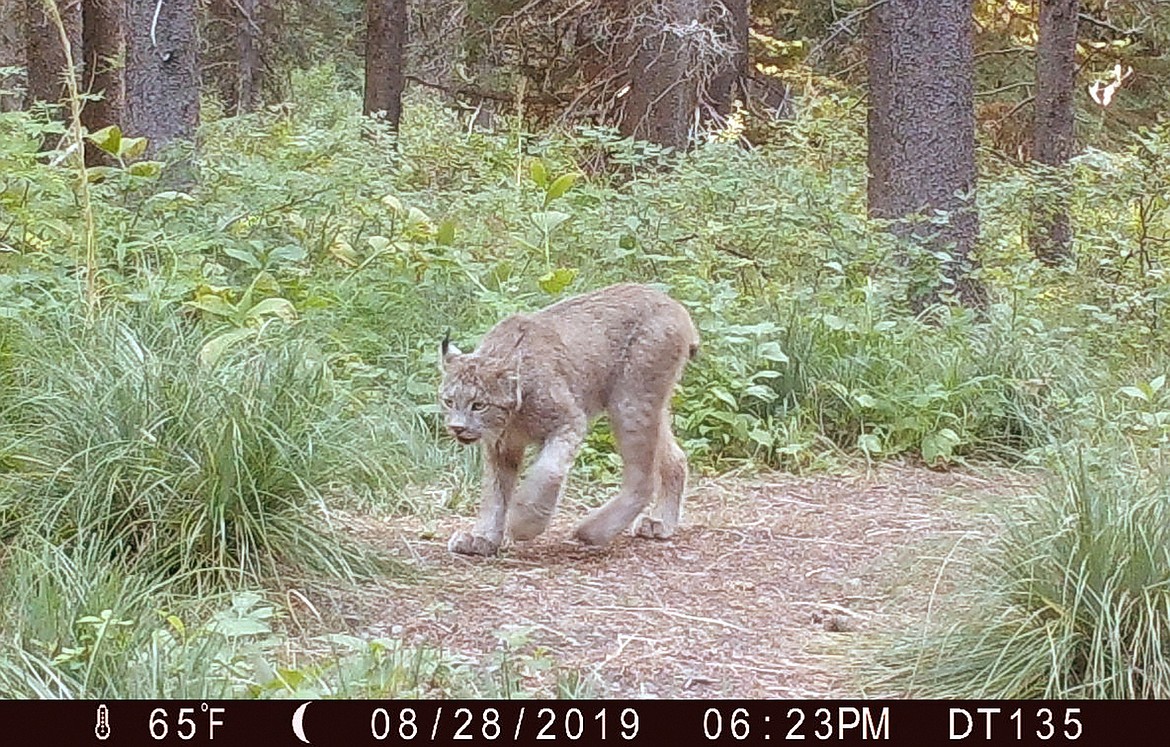Study catches Glacier’s elusive lynx — on camera
Alissa Anderson, a Washington State University graduate student, glimpsed over a hundred intimate moments of one of the most elusive cats in the Lower 48 during her first field season studying Canada lynx in Glacier National Park, without once coming face-to-face with them.
Anderson is examining the presence of the rarely-sighted Canada lynx within Glacier using motion sensored wildlife cameras to capture the cats. Hired under the direction of WSU wildlife biologist Dan Thornton, Anderson collaborated with Glacier National Park to implement the three-year research project last summer, which is entirely funded by the Glacier National Park Conservancy.
The last data collected on lynx in Glacier occurred nearly 20 years ago, around the time Canada lynx was listed as threatened under the Endangered Species Act. The Park Service, in partnership with Wildthings Unlimited, had performed winter track surveys to get a glimpse of whether the cats were present and where they were. Anderson’s project aims to update that data, but through a more exhaustive, more accurate study method.
Typically lynx studies are done in the winter, either by analyzing their tracks or setting baited traps to handle the animals directly. Anderson opted to use passive camera traps, in a method developed by biologists from WSU. This allows her to study the cats in the summer, when tracking would be impossible and baited traps would be too much of a bear attractant.
During the spring Anderson and her crew of two technicians and one intern set up 134 cameras at points along multiple trails covering the entire range of the park. The traps are taken down in the fall. Anderson had 600,000 images to sort through by the end of her first field season, most capturing everything but lynx — like a leaf fluttering. Overall, the cameras captured 114 lynx detections, and Anderson was uncertain how many of those were the same individual captured multiple times.
The study is not looking to capture population estimates of the lynx, Anderson said, but simply to determine where lynx have shown up within the park. Without being able to identify individual lynx, there’s no way to determine an accurate population count. This summer Anderson hopes to get some abundance data in small areas of the park by setting up double camera sets to capture images on both sides of the trail, increasing the chances of identifying individuals by their coat markings.
The cameras also caught more than lynx and leaves. Among the photos were images of around 30 other mammalian species, including nine wolverines, two porcupines and even some flying squirrels. Mountain goats were caught on camera in areas way outside their typical cliffy habitat.
“That’s another cool thing, we’re generating different data [and] we’ll give all this to the Park Service, and they might be able to use it,” Anderson said.
Humans, of course, were also captured in the images. That human-use data, when run through statistical models with lynx and other species detections could potentially illuminate interesting correlations, Anderson said.
The U.S. Fish and Wildlife Service listed Canada lynx as threatened in 2000 largely due to federal land agencies, the largest holders of lynx habitat in the contiguous states, not having adequate regulations in place for conserving and protecting that habitat. After 20 years of implementing regulations and a full peer-reviewed species status assessment, FWS is looking into delisting Canada lynx.
As federal land managers debate future management strategies for Canada lynx, Anderson continues to gather data on the animal within Glacier.

